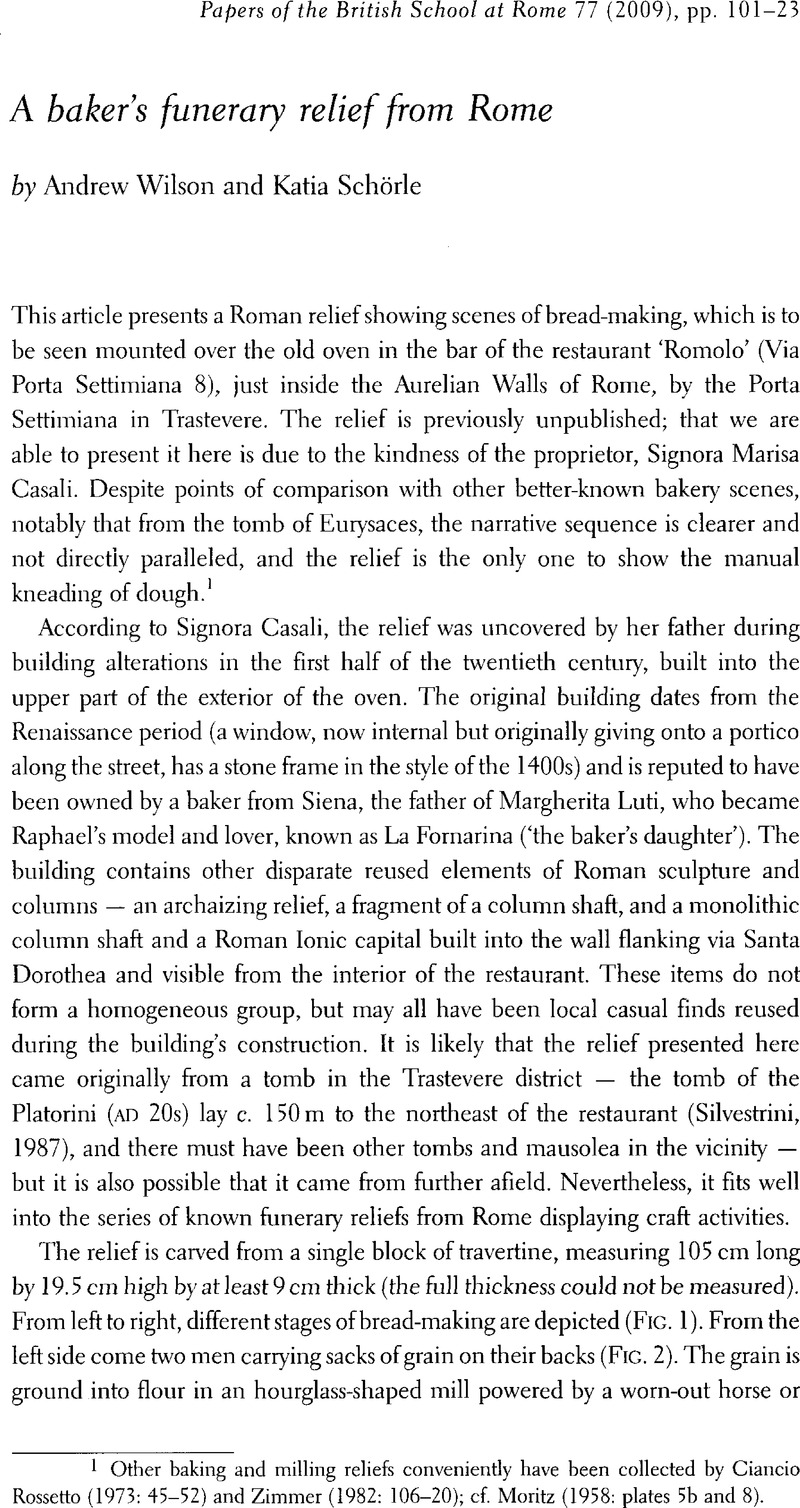Crossref Citations
This article has been cited by the following publications. This list is generated based on data provided by Crossref.
Monteix, Nicolas
Aho, Sanna
Coutelas, Arnaud
and
Zanella, Sandra
2014.
Pompéi, Pistrina.
Chronique des activités archéologiques de l’École française de Rome,
Gilmour, Rebecca J.
Gowland, Rebecca
Roberts, Charlotte
Bernert, Zsolt
Kiss, Katalin Klára
and
Lassányi, Gabor
2015.
Gendered Differences in Accidental Trauma to Upper and Lower Limb Bones at Aquincum, Roman Hungary.
International Journal of Paleopathology,
Vol. 11,
Issue. ,
p.
75.
Cornwell, Hannah
2015.
The King Who Would Be Prefect: Authority and Identity in the Cottian Alps.
Journal of Roman Studies,
Vol. 105,
Issue. ,
p.
41.
2015.
A Companion to Food in the Ancient World.
p.
403.
Monteix, Nicolas
2019.
Saisir l’organisation spatiale des ateliers antiques.
Techniques & culture,
p.
110.
Vincent, Alexandre
2020.
« Rome est à mon chevet / Et ad cubilest Roma » (Mart. Ep., 12, 57, 27).
Mélanges de l'École française de Rome. Antiquité,
p.
297.
Benton, Jared T.
2020.
The Bread Makers.
p.
91.
Benton, Jared T.
2020.
The Bread Makers.
p.
175.
Benton, Jared T.
2020.
The Bread Makers.
p.
1.
Weller, Derek
Orlandini, Omero
Benton, Jared
Schirmer, Christy
LoBue, Lauren
and
Culotta, Scott
2021.
Provenancing the stone tools of Volubilis, Morocco: A Socio-economic interpretation of stonework lithologies.
Journal of Archaeological Science: Reports,
Vol. 38,
Issue. ,
p.
103105.
Majcherek, Grzegorz
2023.
Grain Mills from the Late Roman Legionary Camp in Palmyra.
Bulletin of the American Society of Overseas Research,
Vol. 389,
Issue. ,
p.
21.
Benton, Jared
2023.
Punitive labor and enslavement in the Roman bakery.
World Archaeology,
Vol. 55,
Issue. 1,
p.
12.
Cardenas, Marc
Yarza, Ibán
Matterne, Véronique
and
Arranz-Otaegui, Amaia
2023.
Disentangling the production of the panis quadratus from Pompeii: A new interdisciplinary perspective.
International Journal of Gastronomy and Food Science,
Vol. 32,
Issue. ,
p.
100729.
El Beheiri, Nadja
2024.
Rethinking Subsidiarity.
p.
129.



